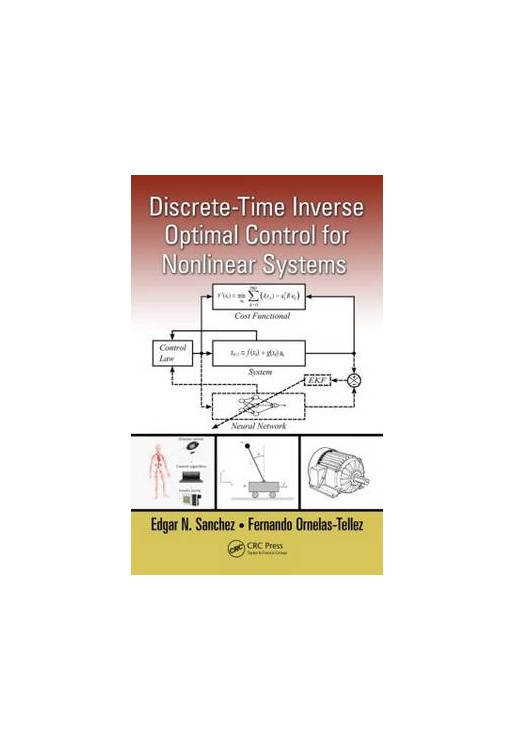Discrete-Time Inverse Optimal Control for Nonlinear Systems proposes a novel inverse optimal control scheme for stabilization and trajectory tracking of discrete-time nonlinear systems. This avoids the need to solve the associated Hamilton-Jacobi-Bellman equation and minimizes a cost functional, resulting in a more efficient controller.
Design More Efficient Controllers for Stabilization and Trajectory Tracking of Discrete-Time Nonlinear Systems
The book presents two approaches for controller synthesis: the first based on passivity theory and the second on a control Lyapunov function (CLF). The synthesized discrete-time optimal controller can be directly implemented in real-time systems. The book also proposes the use of recurrent neural networks to model discrete-time nonlinear systems. Combined with the inverse optimal control approach, such models constitute a powerful tool to deal with uncertainties such as unmodeled dynamics and disturbances.
Learn from Simulations and an In-Depth Case Study
The authors include a variety of simulations to illustrate the effectiveness of the synthesized controllers for stabilization and trajectory tracking of discrete-time nonlinear systems. An in-depth case study applies the control schemes to glycemic control in patients with type 1 diabetes mellitus, to calculate the adequate insulin delivery rate required to prevent hyperglycemia and hypoglycemia levels.
The discrete-time optimal and robust control techniques proposed can be used in a range of industrial applications, from aerospace and energy to biomedical and electromechanical systems. Highlighting optimal and efficient control algorithms, this is a valuable resource for researchers, engineers, and students working in nonlinear system control.
Introduction
Inverse Optimal Control via Passivity
Inverse Optimal Control via CLF
Neural Inverse Optimal Control
Motivation
Mathematical Preliminaries
Optimal Control
Lyapunov Stability
Robust Stability Analysis
Passivity
Neural Identification
Inverse Optimal Control: A Passivity Approach
Inverse Optimal Control via Passivity
Trajectory Tracking
Passivity-based Inverse Optimal Control for a Class of Nonlinear Positive Systems
Conclusions
Inverse Optimal Control: A CLF Approach, Part I
Inverse Optimal Control via CLF
Robust Inverse Optimal Control
Trajectory Tracking Inverse Optimal Control
CLF-based Inverse Optimal Control for a Class of Nonlinear Positive Systems
Conclusions
Inverse Optimal Control: A CLF Approach, Part II
Speed-Gradient Algorithm for the Inverse Optimal Control
Speed-Gradient Algorithm for Trajectory Tracking
Trajectory Tracking for Systems in Block-Control Form
Conclusions
Neural Inverse Optimal Control
Neural Inverse Optimal Control Scheme
Block-Control Form: A Nonlinear Systems Particular Class
Conclusions
Glycemic Control of Type 1 Diabetes Mellitus Patients
Introduction
Passivity Approach
CLF Approach
Conclusions
Conclusions
References


